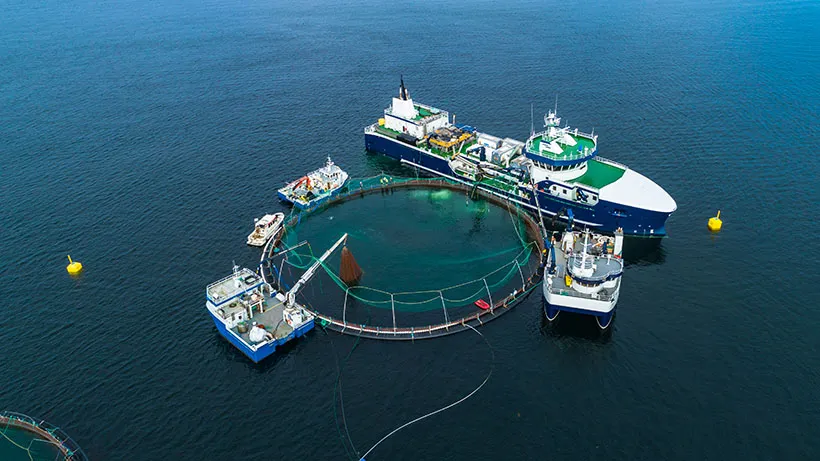Traditional industries are going through a transformation in Norway – an interesting market for high-tech enterprises

SMEs that have plans for internationalisation usually enter the global business arena by using a route that turns south after Sweden: towards Great Britain, Germany or other Central European countries – or directly to the Chinese or American markets. In the export trade financing barometer commissioned by Finnvera and the Chamber of Commerce, Norway was the third most important export destination, even if it is still clearly behind the top countries. Nevertheless, the wealthy oil state right next door has started to attract more interest in the past few years.
Norway is a stable Nordic democracy, where the economy is growing briskly and the unemployment rate is less than four per cent. The country invests in infrastructure, hospitals, airports – in all kinds of areas, in which the products and services of Finnish technology companies can yield efficiency improvements and cost savings while taking business operations to a whole new level.
“The heyday of the oil industry has seen Norwegians become used to always asking for the best, but when an export company already has a couple of good reference deliveries under its belt, Norway could well be a good starting point for conquering the world. Another advantage is that you can do business without jetlag!” says Jukka Suokas, Commercial Counsellor at the Finnish embassy in Oslo. He has worked in Oslo as part of the Team Finland network since August 2018.
As a representative of Business Finland and Finnvera, Suokas’s task is to provide enterprises that plan expansion to the Norwegian market with information about services for financing export trade and enterprise growth. Finnvera has had a dedicated expert in Oslo since April 2017.
Everything is built on oil
Norway can congratulate itself for its smart use of oil funds. The news about the oil find in Ekofisk was published the day before the Christmas Eve 1969, and oil production started a couple of years later. After that, both oil and gas have been found in large quantities in the sea areas of Norway’s continental shelf. Norway is the 15th largest oil producer and 7th largest gas producer in the world. In December 2017, the decision was made to start using the Johan Castberg oil field, located in the Barents Sea, which meant there would be a EUR 5 billion investment.
The State of Norway has wisely placed the oil-related licence and tax revenue in a fund. Currently, Norway’s Oil Fund has nearly USD 1,000 billion in assets and is the largest fund in the world. The fund yielded an amazing 13.7 per cent return in 2017, and more than half of the fund’s return comes from shares owned by the fund. Each Norwegian, from babies to the elderly, has pension funds amounting to approximately EUR 160,000. Oil revenue and high taxation are key to maintaining a high-quality welfare state.
“Oil has also made it possible to make significant public investments and keep the entire country populated. The state budget can be supplemented with a maximum of three per cent of the fund’s value, and this approach has been adopted after the oil price crisis of 2014. In the State of Norway’s budget for 2019, amounting to EUR 143 billion, the share of the Oil Fund is EUR 29 billion, or approximately one fifth,” notes Suokas.
Norwegian salmon flies around the world
After oil and gas production, fish farming is the second largest export sector for Norway. Norway is the world’s second biggest fish exporter after China, and its ambitious goal is to be the NASA of marine research. In 2018, Norway exported 2.7 million tonnes of fish products, amounting to nearly EUR 10 billion. The year-on-year increase was five per cent. Fish exports are predicted to increase by as much as fivefold by 2050. Salmon farming is moving from fjords and shores further to the open sea, where conditions pose additional challenges for technical solutions, too. The sector has started to use remote management, automation and platform and other solutions used in offshore oil drilling.
“Not many people know that it was Norwegians who came up with the idea of using salmon in sushi. Now, Norwegian salmon is flying to Asia and all around the world, first to Vietnam for cutting and then to restaurants within two days of being caught. These are truly flying fish! This may not sound like the most ecological activity but, on the other hand, salmon farming uses only 1.5 tonnes of fresh water per tonne of salmon, compared to 15 cubic metres per tonne of beef,” says Suokas.
In 2017, Norway’s share of Nordic air freight was half. Of that, salmon and other seafood account for more than half: 90,000 tonnes and EUR 500 million. The amount is increasing strongly. A large logistics centre, capable of handling 300,000 tonnes of fish per year, will be completed at Gardemoen Airport in Oslo in 2020. A lot of Norwegian salmon also passes through Finland on its way to the world.
Seafaring is also changing
Norwegians are a nation of seafarers, and behind the largest shipping companies in the world, you can often find a Norwegian family. For instance, Royal Caribbean Cruises, known to many Finns, is associated with the Wilhelmsen family.
Norway’s own shipbuilding focuses on technologically advanced service and other vessels used in the offshore oil and gas industry. Typically, hulls are built in lower-cost countries and furnished in Norway. Norway’s shipyards also build vessels for the navy, fishing vessels and fish carriers, and passenger ships. Repair shipyards also operate actively, and the state finances the service and renovation of its own vessels.
“At the Norwegian Shipowners’ Association’s seminar a while ago, the seafaring industry was challenged with regard to climate warming. As tonnage turnover is slow, energy efficiency, biodiesel and other renewable forms of energy, and technological innovations are emphasised in current vessels. Future solutions in coastal traffic include electrically powered vessels and, on long routes, new energy solutions such as hydrogen, methanol, ammonia or synthetic fuels. Electrical vessels are pioneered by an interesting sector: in 2019, the fertilizer company Yara will introduce an electrically powered container carrier called Birkeland, equipped with an autonomous loading and unloading infrastructure. Norway is also researching and developing battery technology that is suitable for marine conditions.”
Norway is near
Despite being so close, Norway has remained a somewhat unknown market for Finnish enterprises. Nevertheless, Norway offers an interesting international market especially for high-tech companies. All sectors are looking for ecologically sustainable solutions that reduce costs, create added value and facilitate other operations.
“Finnish technology companies have a good reputation in Norway. There is demand for cleantech companies, as oil industry investments, for instance, are estimated to increase by as much as 15 per cent in 2019. Despite the fact that growth is slowing down, construction activity remains strong as the state makes major investments in infrastructure, especially in the north. Health care investments are also extremely large: new hospitals are being built, and equipping them requires a lot of technology and new service solutions. Good solutions can be found in Finland: an ageing population is a challenge in both countries.”
Contact us
Jukka Suokas
Commercial Counsellor, Business Finland
tel. +47 954 22 131 (Norway), +358 40 5019290 (Finland)
[email protected] Trade Center
Thomas Heftyes gate 1, 0244 Oslo, Norway
Jukka Suokas has worked in many different positions at Finnvera for 24 years. He is very familiar with Team Finland cooperation, and his leadership responsibilities have included, for instance, the Team Finland network’s joint KasvuCRM customer data system project. KasvuCRM was adopted in late 2018. This is the second time Jukka has been posted abroad; however, his previous secondment as an Industrial Secretary Assistant for Tekes in Los Angeles was more than 25 years ago.
